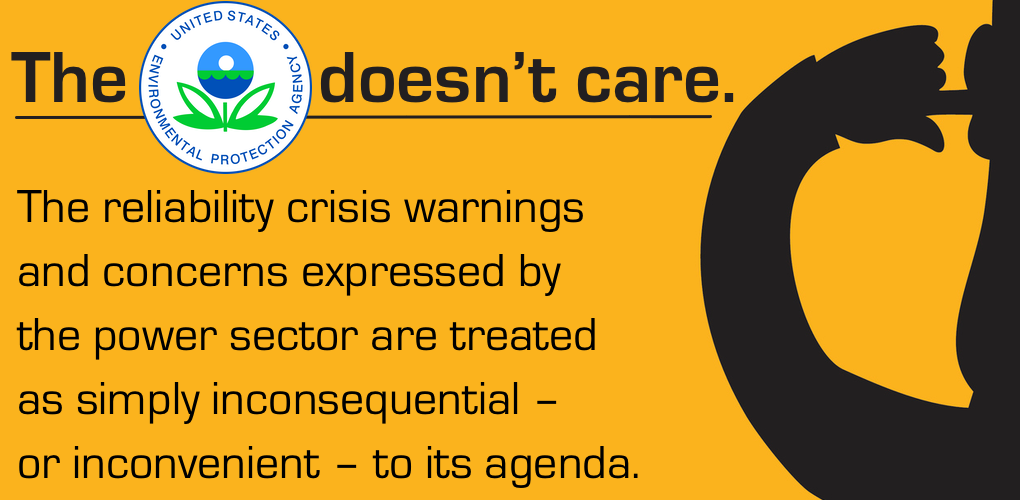
Does the EPA Care at All About Grid Reliability?
In July of last year, 26 House Republicans sent U.S. Environmental Protection Agency (EPA) Administrator Michael Regan a letter asking for details on the agency’s efforts to assess the potential grid reliability threats posed by EPA’s regulatory agenda. Among other detailed questions, the letter asked what work had been done to coordinate with the Federal Energy Regulatory Commission, Independent System Operators and the states affected by EPA’s power plant strategy in the wake of escalating warnings about eroding gird reliability.
For months, Administrator Regan had been touting a coming “suite of regulations” designed to accelerate coal plant retirements. The authors of the letter, led by Cathy McMorris Rodgers of Washington – then the ranking member of the House Energy and Commerce Committee, and now Chair – asked for a prompt response. To date, the administrator still hasn’t delivered it. Now, with rumors swirling of his imminent departure, the question is, will he ever?
In the proceeding months, the grid reliability warnings that prompted the congressional inquiry have only grown more concerning and urgent. The North American Electric Reliability Corporation – the regulator in charge of grid reliability – is all but begging for a more cautious approach to managing baseload retirements. Yet, the EPA hasn’t wavered from its plan. The promised regulatory blitz is now well underway.
Supercharging the Crisis
Recently, Jim Matheson, a former Democratic congressman who now heads the National Rural Electric Cooperative Association, said, “I mean, does anyone at the EPA think about reliability when they’re talking about making new rules? We all know the answer to that.”
Unfortunately, we all do know the answer: the EPA doesn’t care. The warnings and concerns expressed by the power sector are treated as simply inconsequential – or inconvenient – to its agenda.
If there has been any acknowledgement from EPA of the reliability question – even if indirectly – it’s that the Inflation Reduction Act (IRA), and the enormous incentives in it for the deployment of renewable energy, will be a reliability cure-all. There’s an unmistakable “let them eat cake” smugness about the posture.
Billions upon billions for more renewables won’t solve the reliability crisis. In fact, the IRA poses the real danger of papering over the crisis when in fact it’s only exacerbating the forces that have created it.
What the IRA importantly does not do is address the significant time it takes to site, permit and build replacement capacity. And, even if renewable additions can outpace coal retirements from a gross capacity standpoint, the loss of accredited capacity – the capacity that can be counted on during periods of peak demand when the reliability battle is won or lost – is poised to nosedive.
The pace of change and the fear that the capacity that has long underpinned reliability will retire more quickly than it can be responsibly replaced has been the source of concern all along. If the IRA has given the impression the energy transition can now be achieved quickly and easily with little cost to consumers and no danger to reliability, we’ve walked right into an ambush of our own making.
As the EPA forges ahead, there’s an extraordinary danger of the gap between what we have to ensure reliability and what we need growing startlingly wider when responsible energy policy should have closed it. In other words, instead of solving the problem, the one-two punch of the IRA and EPA’s regulatory blitz are poised to make it far, far worse.
The EPA may want to pretend the grid reliability crisis isn’t real or that its regulatory agenda doesn’t pose a grave threat of supercharging it. But, if that’s true, shouldn’t the EPA – at the very least – be able to resoundingly answer those questions? If the EPA is ever willing to try, a good place to start would be responding to Chairwoman Cathy McMorris Rodgers’ letter.
- On February 15, 2023
